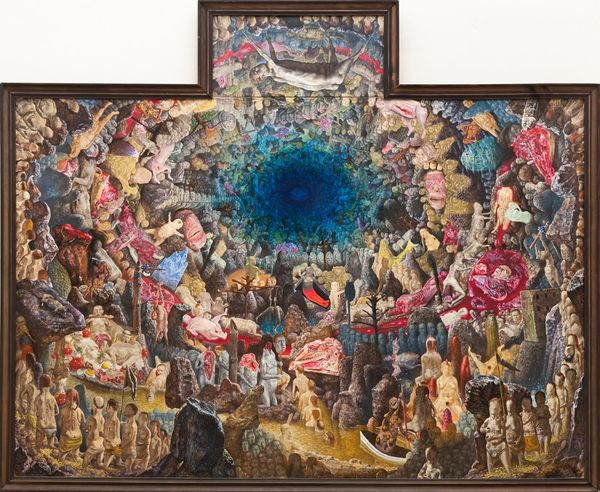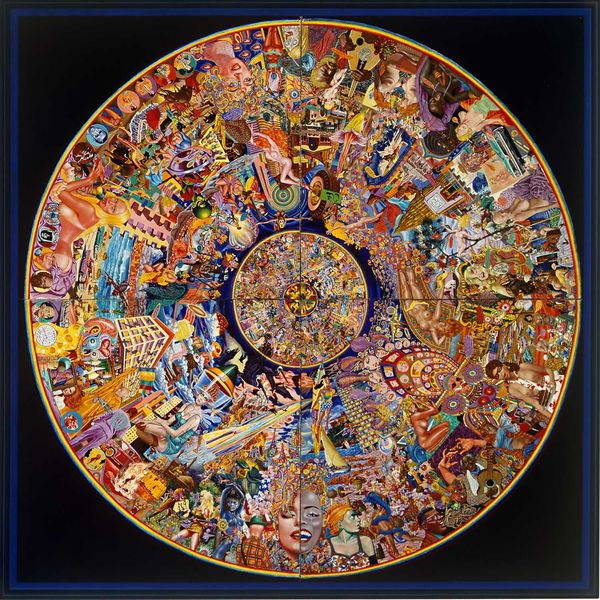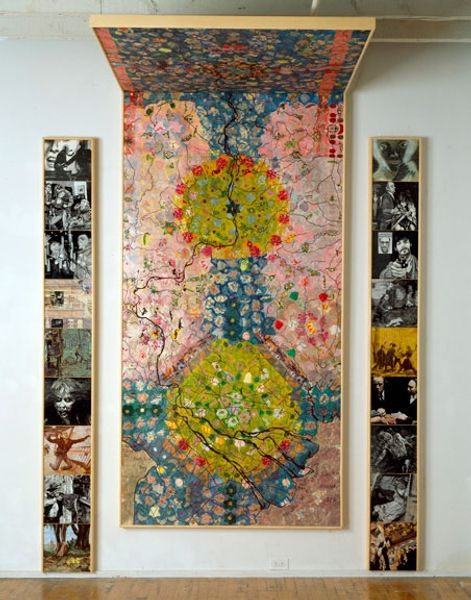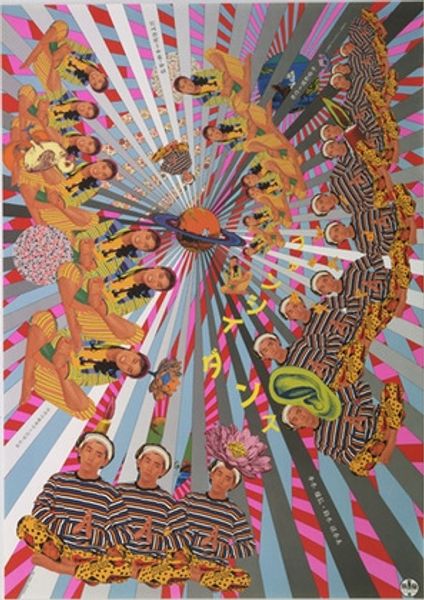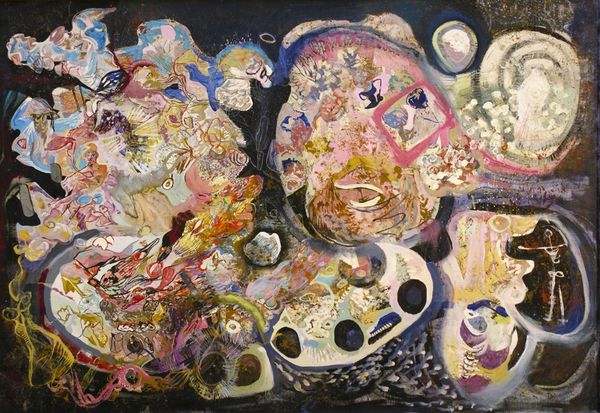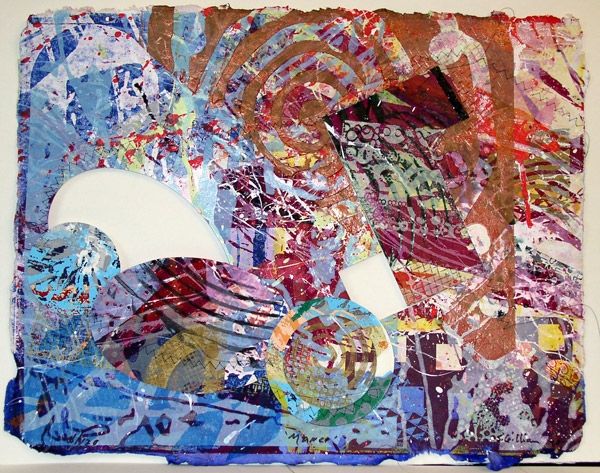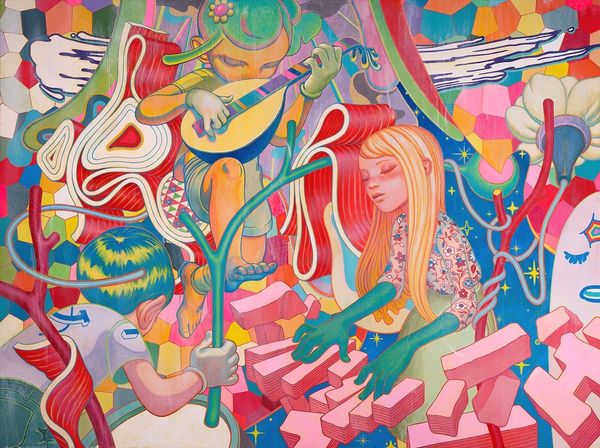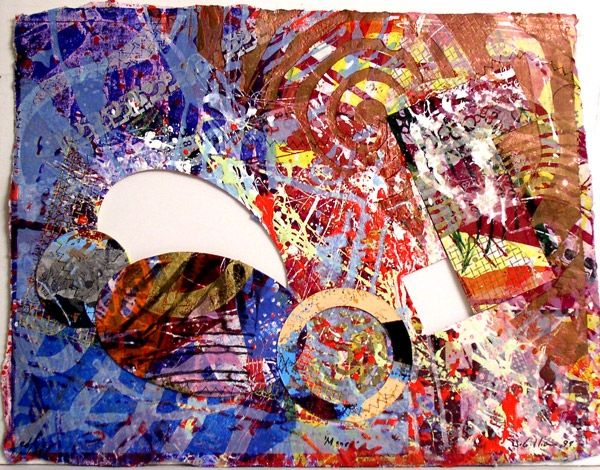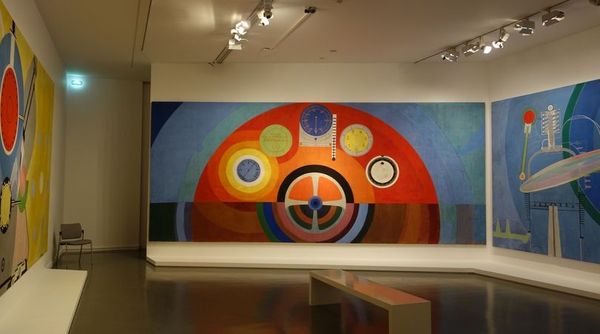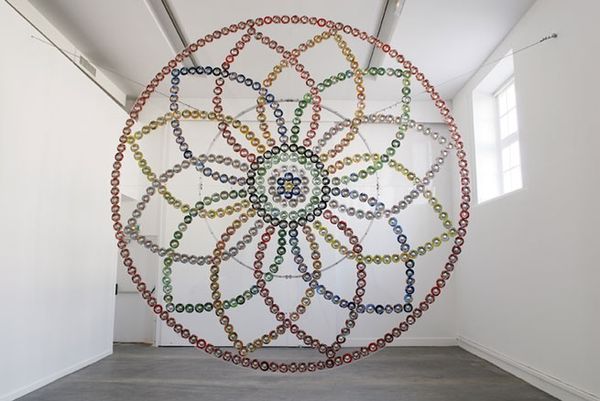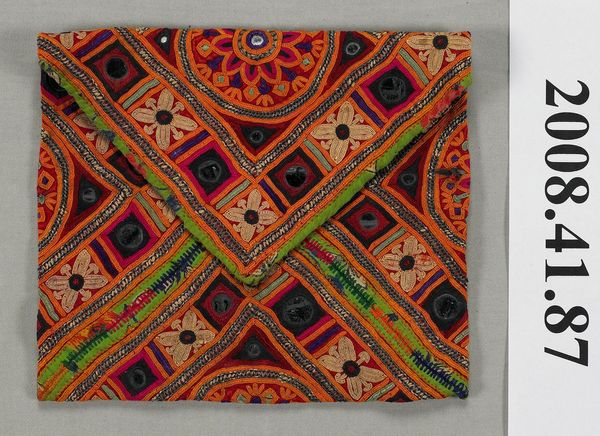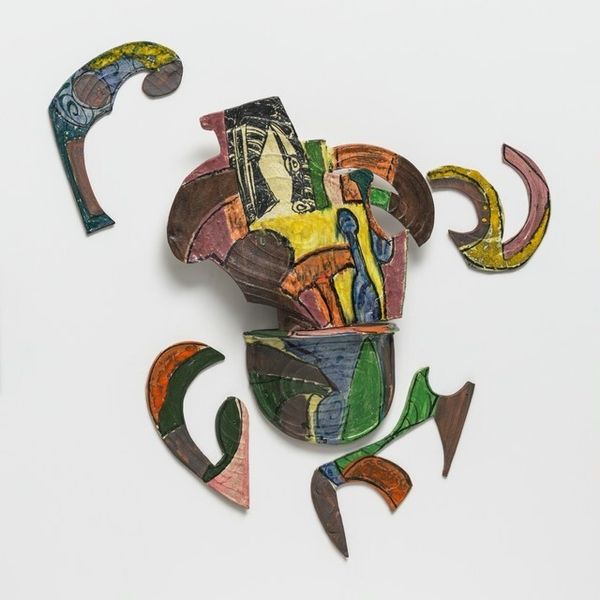
mixed-media, collage, textile, acrylic-paint
#
pattern-and-decoration
#
abstract expressionism
#
mixed-media
#
abstract painting
#
collage
#
textile
#
acrylic-paint
Copyright: Miriam Schapiro,Fair Use
Curator: Looking at "Pleasure Dome," a mixed media piece created by Miriam Schapiro in 2003, the immediate impact is one of visual richness and patterned complexity. What stands out to you initially? Editor: The radiant composition! It strikes me as both joyous and incredibly controlled. The semi-circular form, bursting with color and meticulous detail, is so intriguing to unpack formally. Curator: Schapiro’s work often draws from the Pattern and Decoration movement, celebrating traditionally feminized crafts and aesthetics within a fine art context. The use of fabric and collage elevates those overlooked materials and practices to a more visible place. Consider also Schapiro’s broader investigation into female identity, as these patterns carry symbolic and historical weight, representing generations of women's artistic expression through domestic objects and crafts. Editor: Yes, absolutely. You see that tension, don't you? A tension between pure surface delight and embedded structure, creating an interesting optical experience, from far away the impact of patterns is clear but looking closely at the choice of medium shows that those patterns originate from an engagement of the handmade that you describe perfectly. Curator: Precisely! These textiles become active agents, telling stories of labor, intimacy, and often undervalued skills, thus becoming integrated into our broader cultural narrative, asking viewers to reconsider inherited assumptions and to question these entrenched hierarchies of what's ‘high’ and ‘low’ art, where those distinctions are often coded along gender lines. It acts almost as a direct confrontation to the male-dominated canon. Editor: And this is a particularly dynamic example—that vibrant color palette practically hums. And from a design perspective, her manipulation of space, flattening certain areas and layering others, really propels this work. The piece really opens a lot of opportunities to interpret what formalism is at that period in history. Curator: The piece does push boundaries between abstraction and representation, challenging traditional categories within art history and the sociopolitical narratives that underwrite them. Editor: Considering it formally I was very attracted by the interplay of color. I have to recognize that knowing some details on the role of her position on the importance of the gender struggles from that era really has shifted my view of the piece. Curator: I agree. Understanding the historical and socio-cultural nuances undoubtedly deepens our interaction, doesn't it? Editor: Definitely a perfect example on the importance of contextualizing formalism within history, that shifts our attention to the narrative and the impact in Schapiro’s oeuvre.
Comments
No comments
Be the first to comment and join the conversation on the ultimate creative platform.
